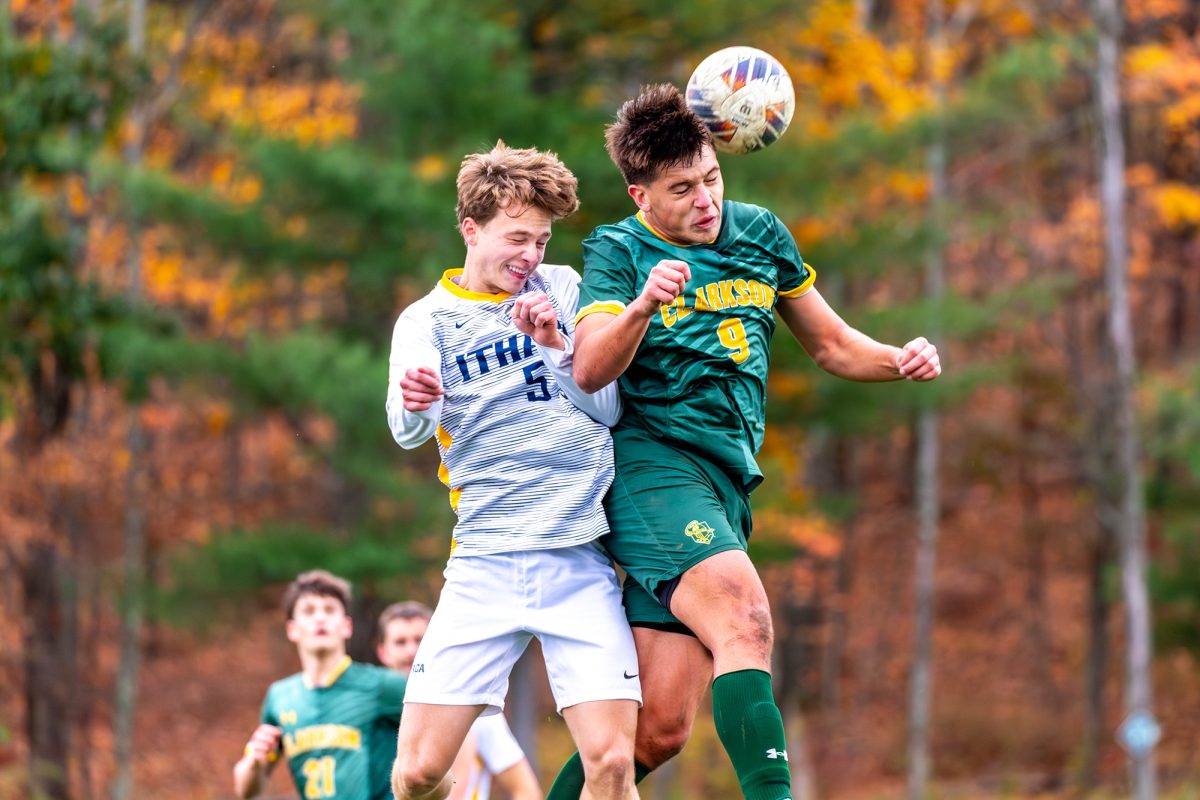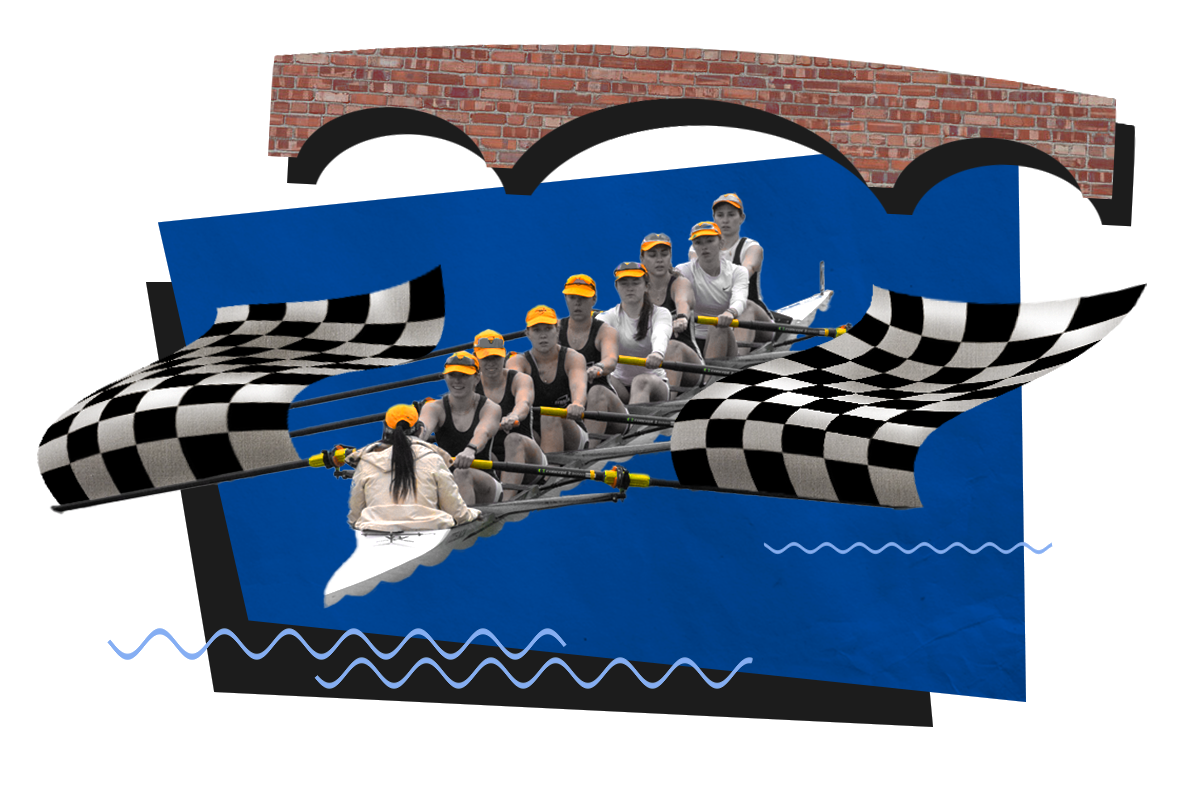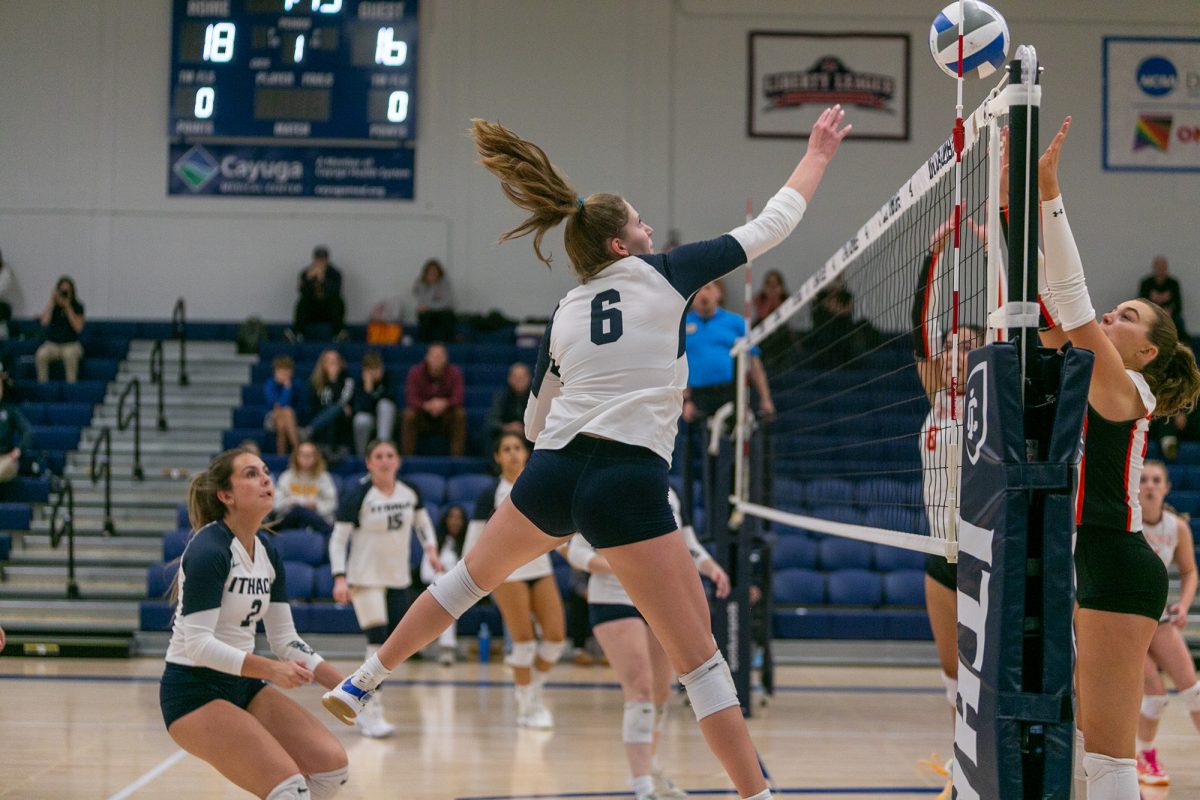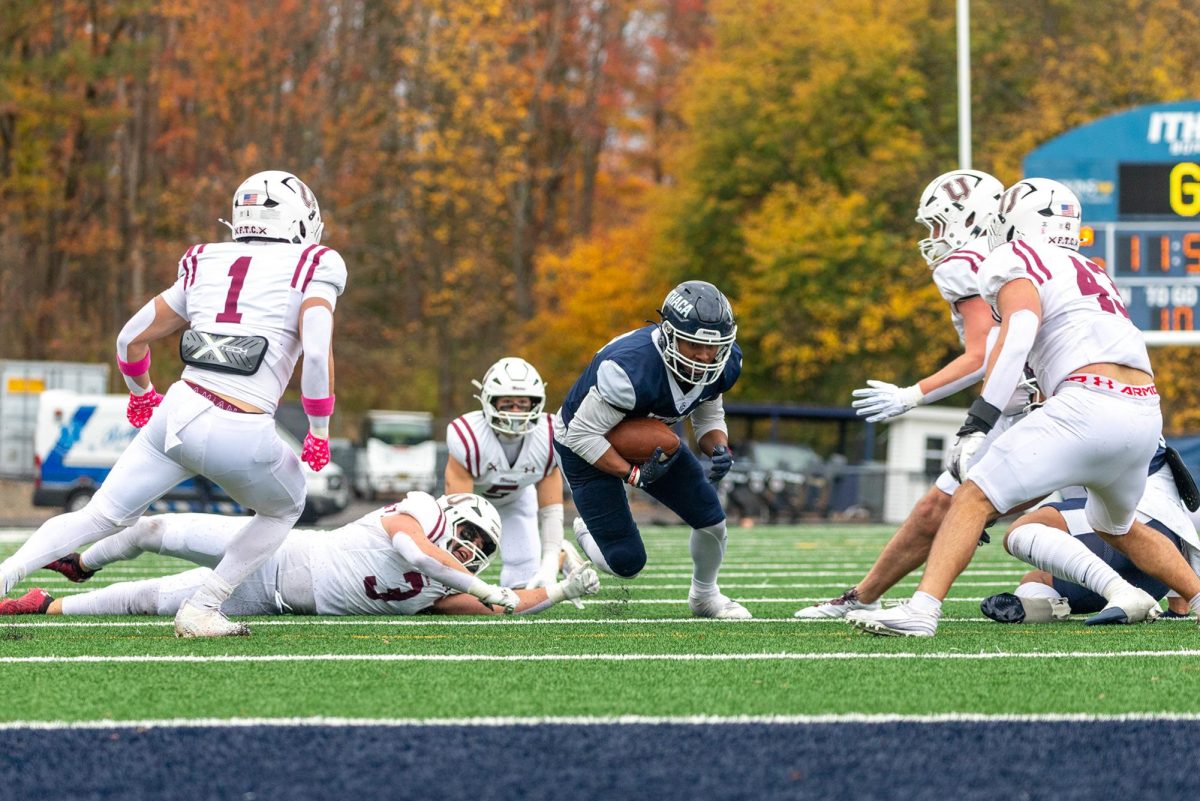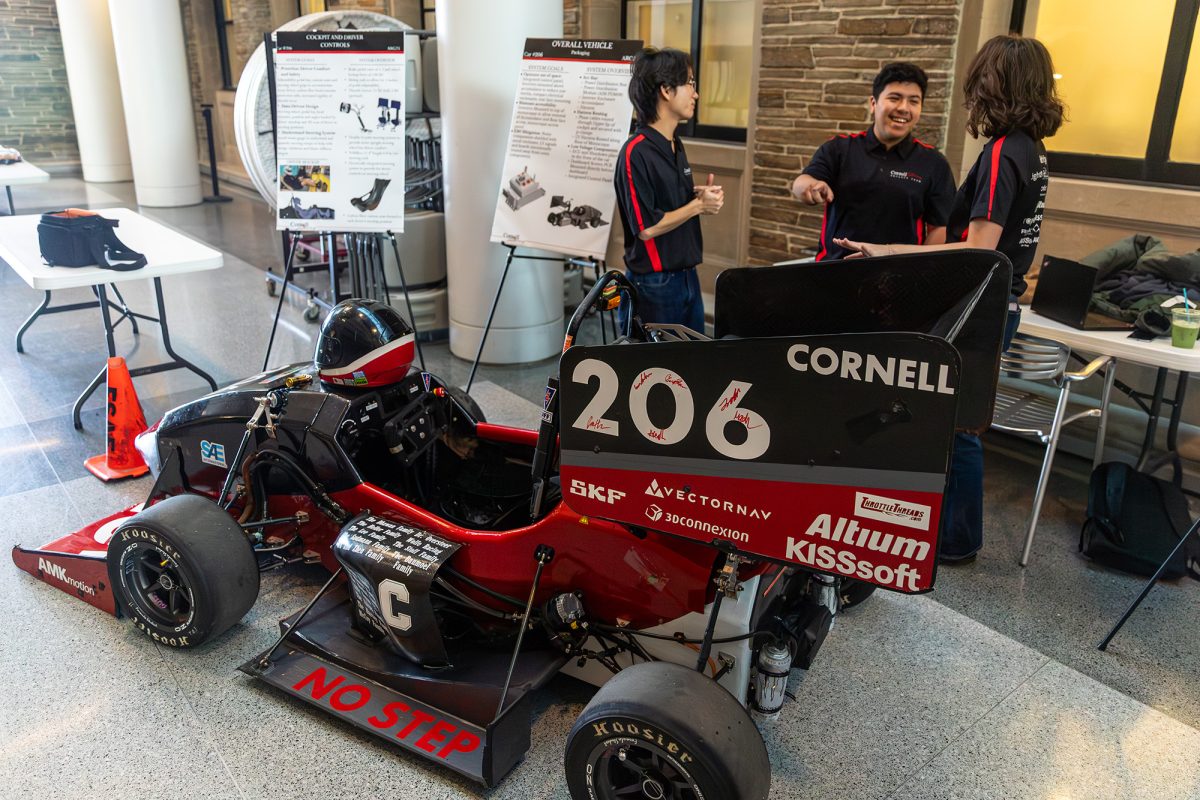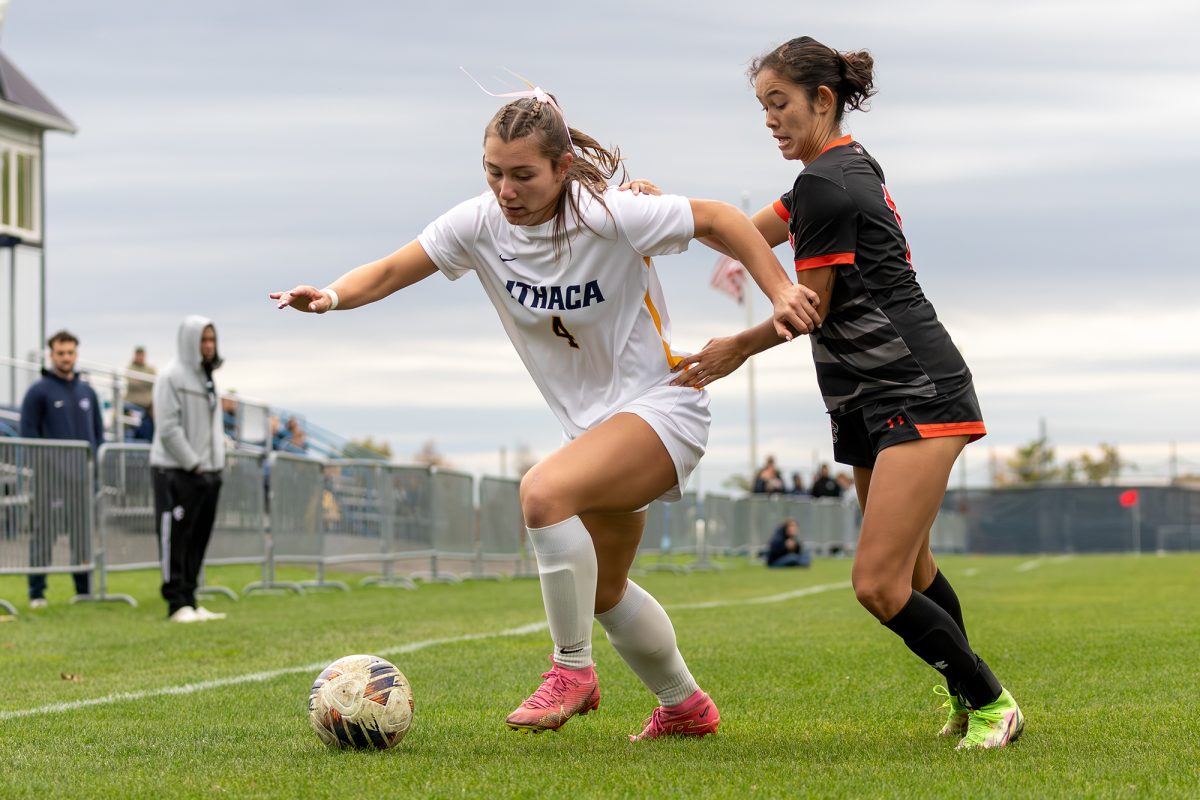Staring down her competitor, senior Allison Young paces the baseline of the tennis court. Slowly coming to a halt, Young focuses her eyes on the small yellow sphere gripped tightly in her left hand. Never taking her eyes off the ball, she methodically bounces it five times off of the concrete-surfaced court. She calmly raises both ball and racquet to eye level and gently shifts her weight to her back foot. Leaning back, she fixes an intense, blue-eyed gaze on her opponent before returning her attention to the ball. As if in slow motion, she tosses the ball into the air as she has done a thousand times before.
Suddenly, the energy accumulated through Young’s stance is released as she leans forward and coils her elbow in, waiting for the ball to complete its parabolic arc. Just as the ball begins to fall, she extends her arm, and in one fluid motion kicks out her back leg and brings her racquet arm up for a tremendous collision between racquet and ball. The latter hurtles over the net, hitting deep in the far corner of the service box, skidding past the outstretched arms of Young’s opponent for an ace. After landing in a bouncing, knees-bent ready position, she relaxes and retreats from the baseline, preparing to do it all again.
Young has been told her whole career that her serve is what will give her complete control of any tennis match. She said her serving style is not about maximizing power or placement but rather combining them to suit the situation.
“When I go to hit a first serve, it all starts with my toss, and for a first serve I’ll try to place it, but I’ll also try to put a lot more power into it,” Young said. “But my second serve for me is more about placement, and it’s usually not nearly as fast paced.”
Young’s serve speaks volumes, but to her team the loudest impact she makes on the court comes from her leadership. Sophomore Alyssa Steinweis said Young is always there to help her on the court when she needs it.
“If I’m having a tough day with serving, she’ll come over and give me advice. She does it in a way that the whole team reacts well to it,” Steinweis said.
When she’s not helping her teammates, Young is racking up the victories. The senior has compiled a 9–3 overall record this fall, and many of Young’s wins can be attributed to how much pressure she puts on opponents with her serve.
Power may be important for Young’s first serve, but you wouldn’t know it from the way Head Coach Bill Austin describes it. Austin said Young’s serve, which he characterizes as “very smooth and pretty flat,” succeeds with its placement more than it’s power.
“When she’s hitting her spots, her serve is a game-changer,” Austin said. “If she hits it short in the box, then the serve has time to come up, which makes it easier to return … but when she’s hitting in the deep corner of the box, her serve is tough because it stays down low.”
Young’s opponents know this all too well. Junior Lisa Tessitore of the Stevens Institute of Technology faced off against Young last week in an Empire 8 matchup. After the match, Tessitore described the difficult process of returning Young’s serve.
“She gets really good angles on her serve, and it’s tough to return because it comes in pretty flat, so you have to react quickly,” Tessitore said. “It definitely takes a lot of time to get used to.”
Tessitore learned that returning a well-placed serve from Young is not an easy task. In fact, Young wins many of her points in two strokes because of weak returns from her opponents. These short rallies allow Young to maintain her endurance and stay fresh throughout the match.
But along with the physical aspects of her serve, there is also the mental game, which Young claims is the most important aspect. She has written small reminders on the handle of her racket like “patience,” “head up,” “relax” and “A-game” since she played high school tennis in Newport, R.I., to keep her focused during matches. She said staying positive helps her stay consistent.
“The most important thing for me is letting myself know that the ball is going to go in right before I serve,” Young said. “I’ve worked so hard on it, and if I think about anything negative then it will mess up the serve.”
Young stays true to this philosophy even when she nets a serve or misses the service box. Her extensive tennis experience has taught her there is always a second opportunity.
“During a second serve, I think not [about] what I did wrong on the first serve, but what I can do to improve the second one,” she said.
Like most other athletes, Young’s stellar career has not come without setbacks. Young has struggled with a back injury, which caused her to miss her entire freshman season. The injury has affected her as recently as last Sunday, when she had to withdraw from a singles match that she was playing against the Stevens Institute of Technology.
“That was a first,” Austin said. “She’s a gamer, so when she looked at me and shook her head, I knew she was hurting.”
Young’s injury Sunday did not stop her from winning the No. 1 doubles match alongside her partner, senior Cristina Nunez. The senior’s serving prowess helped the pair beat Stevens’ pairing of Tessitore and sophomore Jessica Bourque.
As for Young, she is determined not to let her injury hold her back from continued domination on the court. In fact, the injury could be looked upon as a blessing in disguise, as Young is now eligible to apply for a fifth year of NCAA eligibility, since she missed her freshman season.
“Tennis is something I really love doing, and I hope to continue playing for as long as possible,” Young said.


